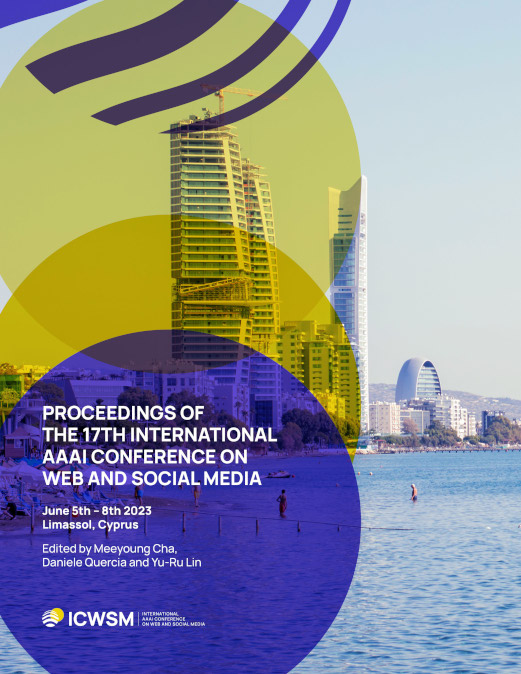Beyond Discrete Genres: Mapping News Items onto a Multidimensional Framework of Genre Cues
DOI:
https://doi.org/10.1609/icwsm.v17i1.22167Keywords:
Subjectivity in textual data; sentiment analysis; polarity/opinion identification and extraction, linguistic analyses of social media behavior, Text categorization; topic recognition; demographic/gender/age identification, Ranking/relevance of social media content and users, Web and Social MediaAbstract
In the contemporary media landscape, with the vast and diverse supply of news, it is increasingly challenging to study such an enormous amount of items without a standardized framework. Although attempts have been made to organize and compare news items on the basis of news values, news genres receive little attention, especially the genres in a news consumer’s perception. Yet, perceived news genres serve as an essential component in exploring how news has developed, as well as a precondition for understanding media effects. We approach this concept by conceptualizing and operationalizing a non-discrete framework for mapping news items in terms of genre cues. As a starting point, we propose a preliminary set of dimensions consisting of “factuality” and “formality”. To automatically analyze a large amount of news items, we deliver two computational models for predicting news sentences in terms of the said two dimensions. Such predictions could then be used for locating news items within our framework. This proposed approach that positions news items upon a multidimensional grid helps deepening our insight into the evolving nature of news genres.Downloads
Published
2023-06-02
How to Cite
Lin, Z., Welbers, K., Vermeer, S., & Trilling, D. (2023). Beyond Discrete Genres: Mapping News Items onto a Multidimensional Framework of Genre Cues. Proceedings of the International AAAI Conference on Web and Social Media, 17(1), 542-553. https://doi.org/10.1609/icwsm.v17i1.22167
Issue
Section
Full Papers

